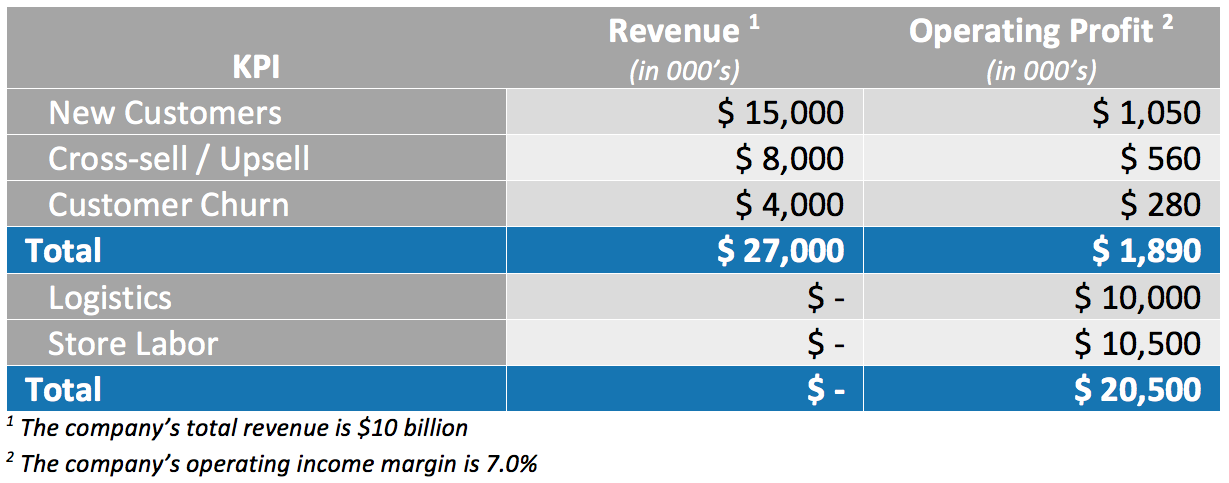We discussed in Part 1 of this series how the Power of One is your X-factor in separating yourself from competitors and motivating clients to move more quickly to explore your solutions. Remember that the Power of One is the financial benefit from a 1% improvement in the operational key performance indicators (KPIs) related to a line of business’ (LOB) strategies and those improved by your solutions. In Part 2, we examined best practices using the Power of One with client executives. In part 3, we’ll explore using the Power of One as part of your account planning strategy.
The Power of One is a proven tool to conduct more effective account planning by:
- Highlighting areas that deliver the greatest financial benefit aligned with the client’s goals and strategies
- Providing a more business-focused approach to identifying and confirming opportunities
- Promoting outside-the-box thinking about additional areas to explore
For example, a retail client with $1 billion in revenue and a 7% operating income margin has company-wide goals of growing revenues and streamlining operating expenses. One of Marketing’s strategies to grow the top line is to enhance the customer experience by creating more appealing individualized offerings and to leverage omni-channels. In Operations, their strategy is to improve profitability by reducing logistics expenses – they’re specifically targeting transportation and warehouse management through improved forecasting and inventory visibility. In addition to logistics costs, Operations is also exploring ways to leverage store labor costs through more effective scheduling.
The table below shows the Power of One for selected KPIs associated with the retailer’s goals and the LOBs’ strategies. Early in the sales cycle, it’s likely that you don’t know the value of the client’s KPIs such as cross-sell/up-sell or logistics expense. For that reason, the best initial approach is to apply industry norms. Using these norms means the estimated financial benefits are not actually the client’s values, but the good news is that experience shows that they’re directionally accurate.

As part of account planning, the sales team would use the Power of One to answer these questions:
- Which areas deliver the greatest financial benefit?
- How do your solutions align to the KPIs delivering the greatest benefits?
- Using non-technical language, how would you explain how your solutions help improve these KPIs to an LOB executive?
- How do the areas providing the biggest benefits compare to the opportunities you’re currently pursuing with the customer?
- Do the Power of One results highlight other areas to explore with the client?
Our experience shows that adding the Power of One to account planning can be an influential game changer by providing insights into prioritizing existing and new opportunities.
CALL TO ACTION: map your client’s goals and LOB strategies to operational KPIs. Estimate the Power of One for these KPIs. Answer the five questions shown above and answer one more question: how does including the Power of One help improve your current account planning?
